I struggle with what to share from our Nepal travels. So many experiences flood my mind at once, and some of them just have to wait until we can share them with you in person… or until you decide you simply must travel to Nepal and have them yourselves. We highly support that decision, even if you don’t take the local bus while you’re there.
For now, we’ll spend a couple posts sharing with you some different aspects of our trek. With these, we hope to give you a sense of what and how we experienced the AC.
One of the more enchanting aspects of hiking the AC, especially in October, is the feeling of time travel we experienced by hiking through the seasons. In just a couple weeks we hiked from summer through fall to winter and back again. Imagine time standing still while you walk through 9 months of seasons in three weeks! It’s a beautiful feeling to experience while trekking and a beautiful theme for this trek.
Summer
We began our trek in the jungle. We know it was the jungle, because we saw a monkey. And because it was a warm and humid environment with the foliage to match. I say warm and not hot, because we’re currently in Thailand in a truly hot and humid environment, and hindsight being 20/20, Nepal was just not this hot. But, despite it only being warm and humid, and despite all of us having lived through a few exceedingly hot, humid east coast summers, we true Californians in our love of dry climates sweat a lot. And, grumbled quite a bit. Summer was an uncomfortable season to hike in. But the scenery made it all worthwhile. Lush green and yellow rice paddies lined the hillsides climbing almost to the tops of extremely steep slopes. A smattering of villages sprinkled among them. The paddies were not quite ready for reaping – about two weeks to harvest, Deepak, our guide, said. The trek kept us with almost continual views of this mind boggling scene. And when it wound, it wound us through small villages with locals sharing a cup of tea, tending to their animals, or doing laundry in an open basin or stream. We spent about five days in summer, before climbing into fall.
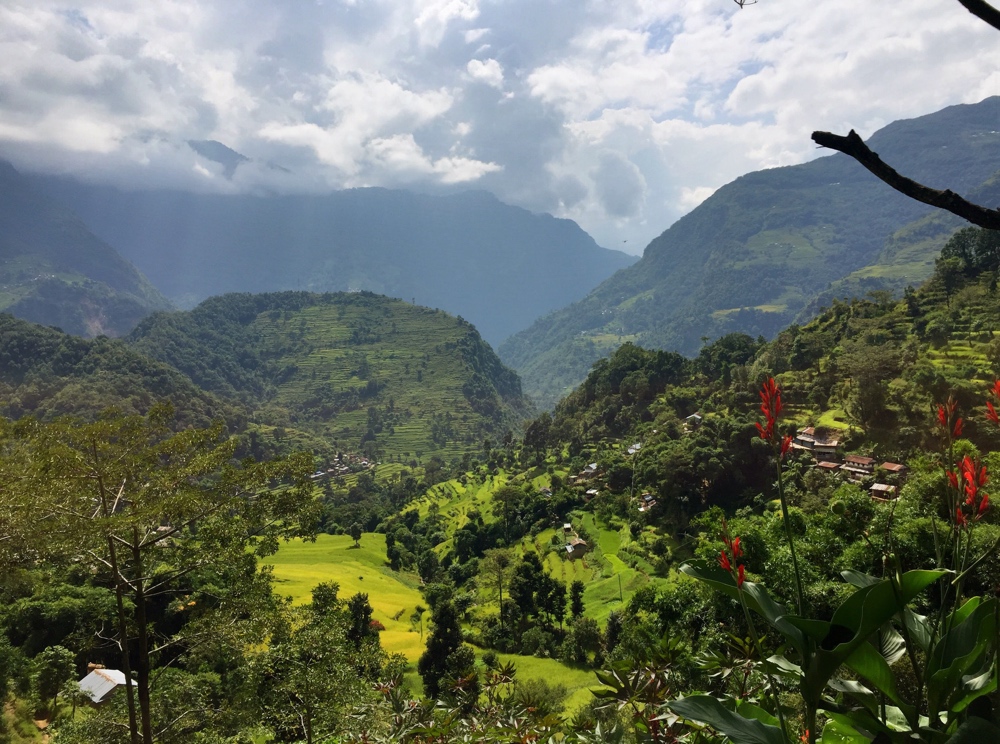
Fall
Fall began a bit unexpectedly for us. For some reason we all had expectations that the mountains would be largely barren and cold, already wintery most of the way – as if we’d be jumping from summer straight to winter. Silly us. You have to climb to that point, and in climbing, you must climb through fall. We first noticed fall as we climbed out of the jungle and into more deciduous forests. The air was cooler and drier, and the trees covering the slopes up here had begun yellowing in the first hints of fall. As we continued climbing, the deciduous forests gave way to pine forests, that in turn gave way to smaller, high altitude trees and shrubs. Of course the pines don’t offer much fall flavor, but by the time we’d climbed into the higher altitude shrubbery, the shrubs were wearing their most brilliant reds and golds of the season.
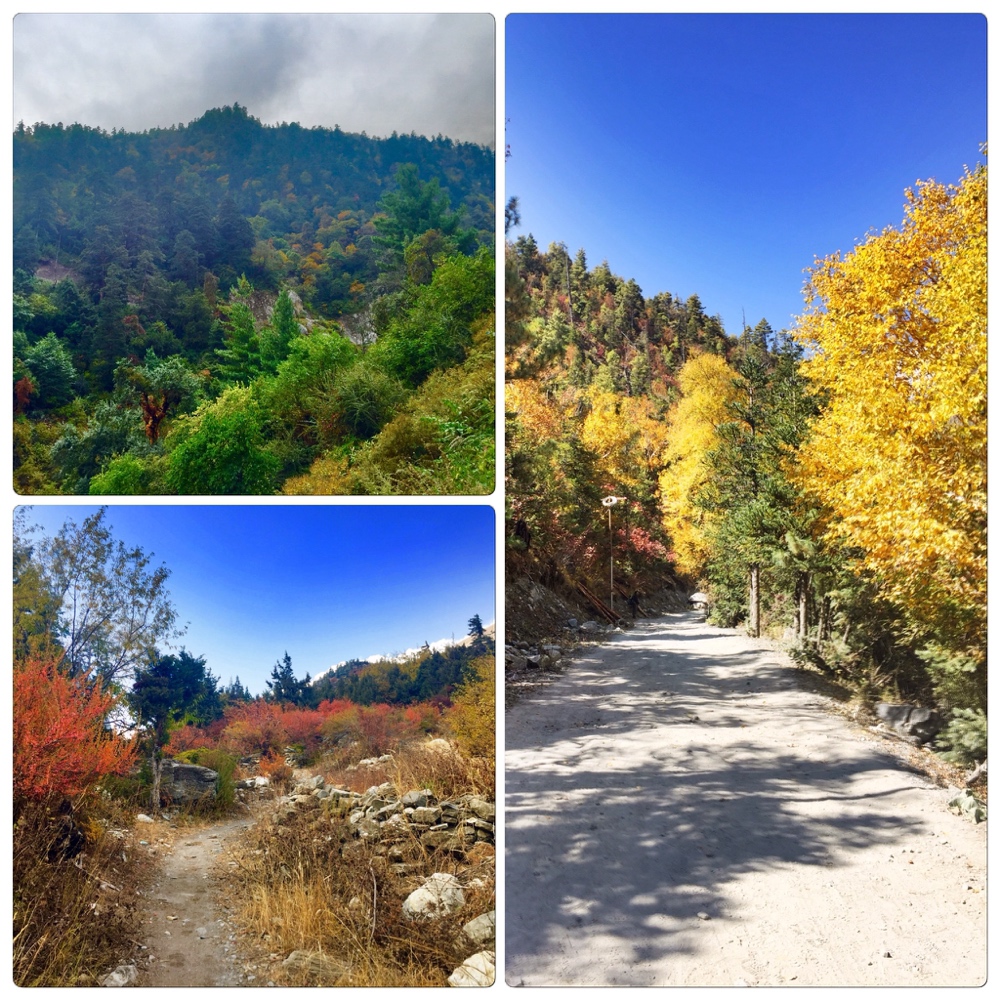
In fall, we saw changes in the fields too, as we watched the full harvest cycle – fascinating for those of us having never witnessed farming without modern machinery. Farmers were out reaping their crops by hand with scythes. Where the crops had been reaped, they were separating the shaft from the grain by taking bundles of the crop and beating them against the ground so the grains would fall off. They then sifted the grain on large round screens to clean it. On a few occasions we witnessed farmers using oxen to plow their cleared fields. The process was simple and captivating.
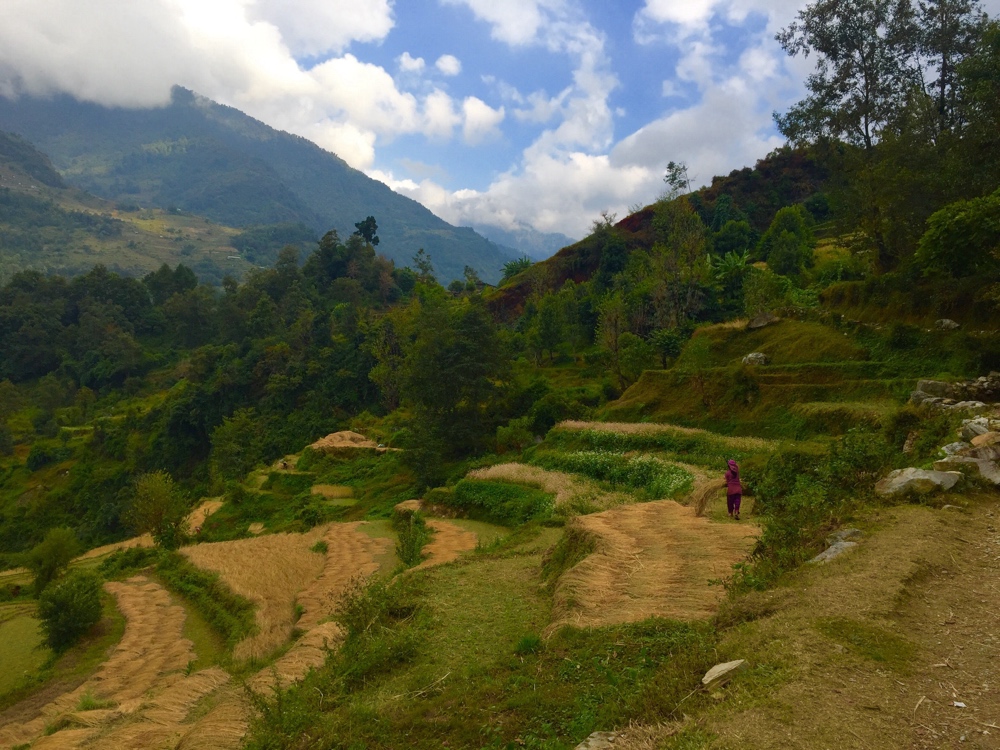
The beginning of fall also marked one of the Buddhist festivals that involve animal sacrifice. I imagine the festivals involve other, more commonly known activities as well. But, the animal sacrifice was what stood out in our minds. We arrived a bit late to the actual sacrifices but did witness part of the carving and dividing of a sacrificial bull. And, we followed its bagged head being carried up the mountain for a bit longer than one would want to hike behind a decapitated bull head. Upon telling a few trail friends of our bull head episode they recounted their tales from the previous day of hiking through “rivers of blood”. No thanks. A fascinating season to say the least.
Winter
When reading about the AC, one person remarked that you will be cold all the time. There’s a feeling of truth to that, even though we certainly were not cold all the time. But once you enter winter, you will only occasionally find a warm space to be in. Guesthouses are not heated. You will be creating your own warmth through clothing, food, and hot drinks. When you’re lucky, you’ll be able to sit in a warm dining commons for a couple hours each night. And, you’ll be lucky fewer nights than you’d think.
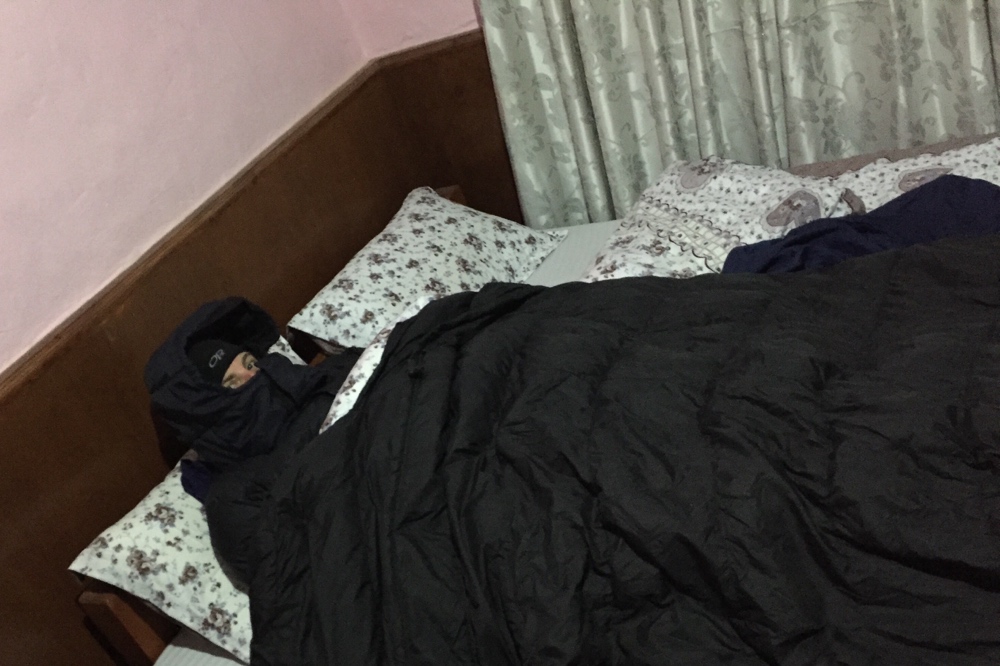
Those of us who enjoy climate controlled environments (like California), struggle with being in a really cold space for 11 days. But once again, the scenery is soooo worth the struggle. The pictures don’t do it justice, so I just won’t include them… Ha! Just kidding. Me? Leave out pictures? Never. But really, they can’t capture the magnanimity of the mountains around us: the feeling of trekking above 10,000 ft while peaks and ridge lines tower 10,0000-15,000 ft higher. You’ll have to don some sneakers and down suits and try it yourselves sometime.
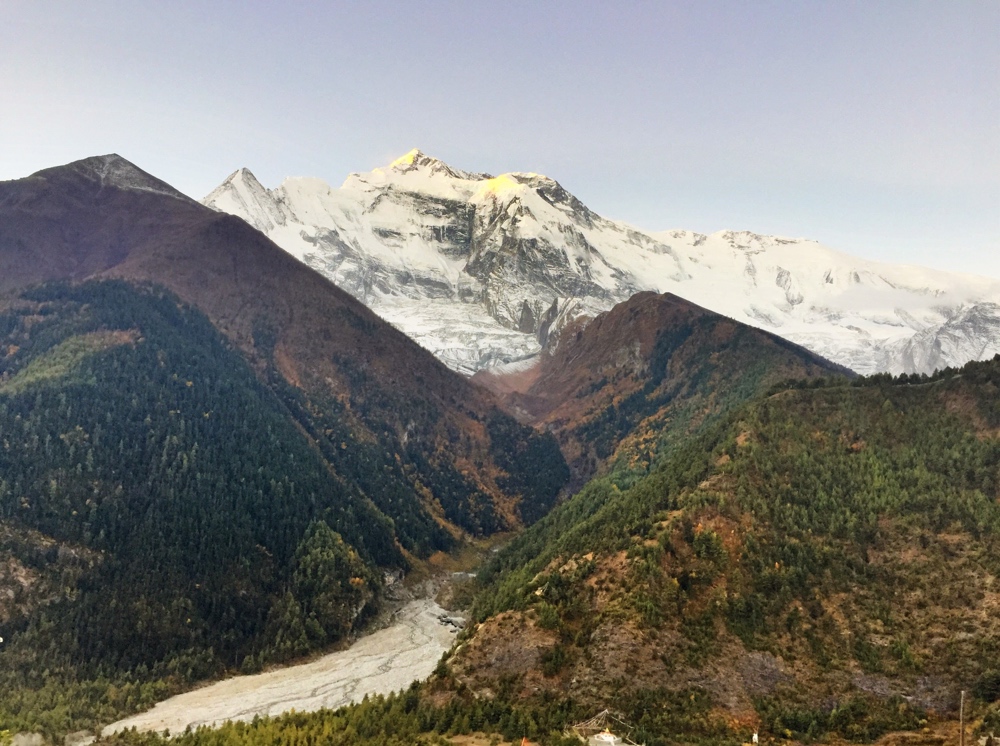

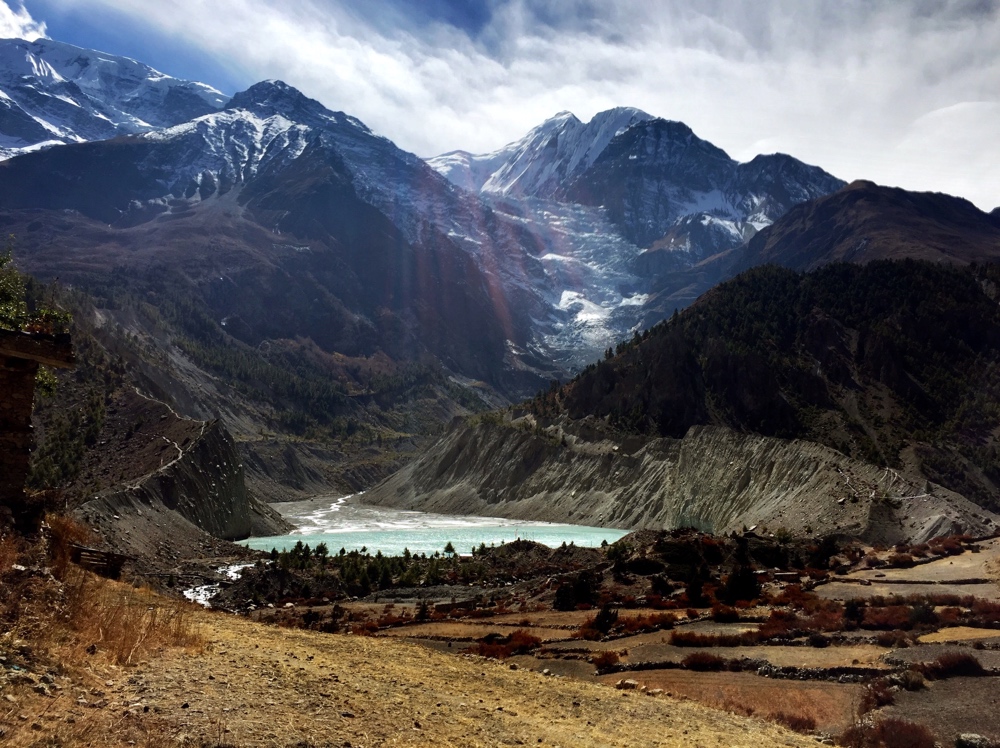
The landscape was dry and barren with smaller and smaller shrubs giving way to sparse grasses. Any fields we passed were far past their harvest, and some farmers had already moved to lower elevations for winter. The continuous mountain views were stunning in a new way, in a more rugged, wild way than they are when the ground is covered in brilliant color. And during the coldest times, hiking is barely sufficient to keep warm.
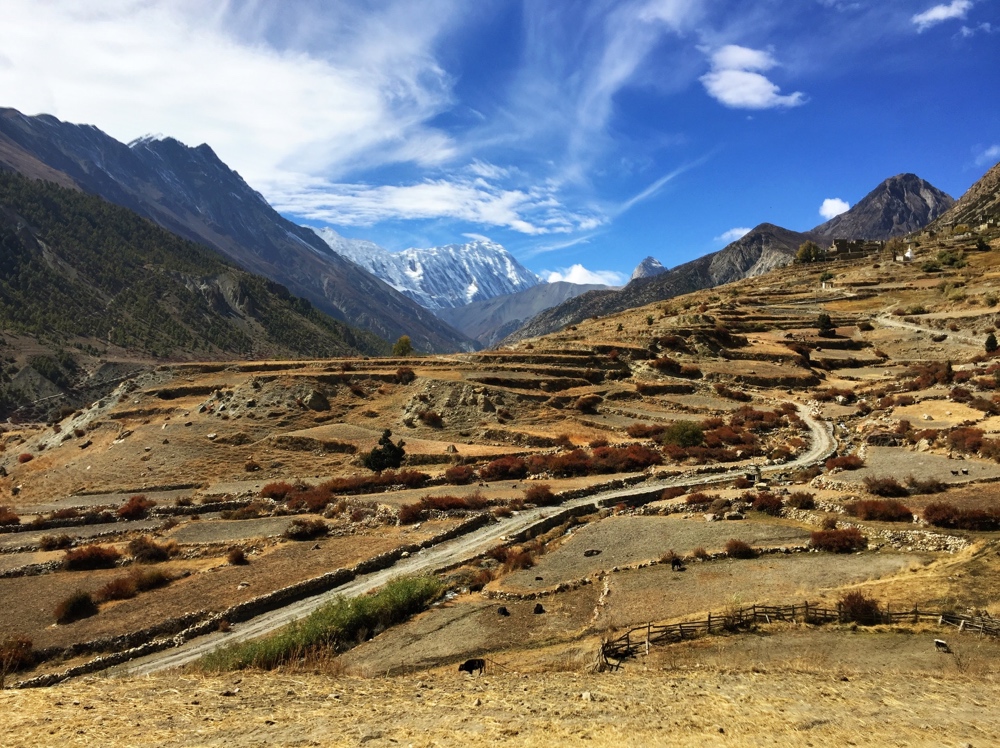
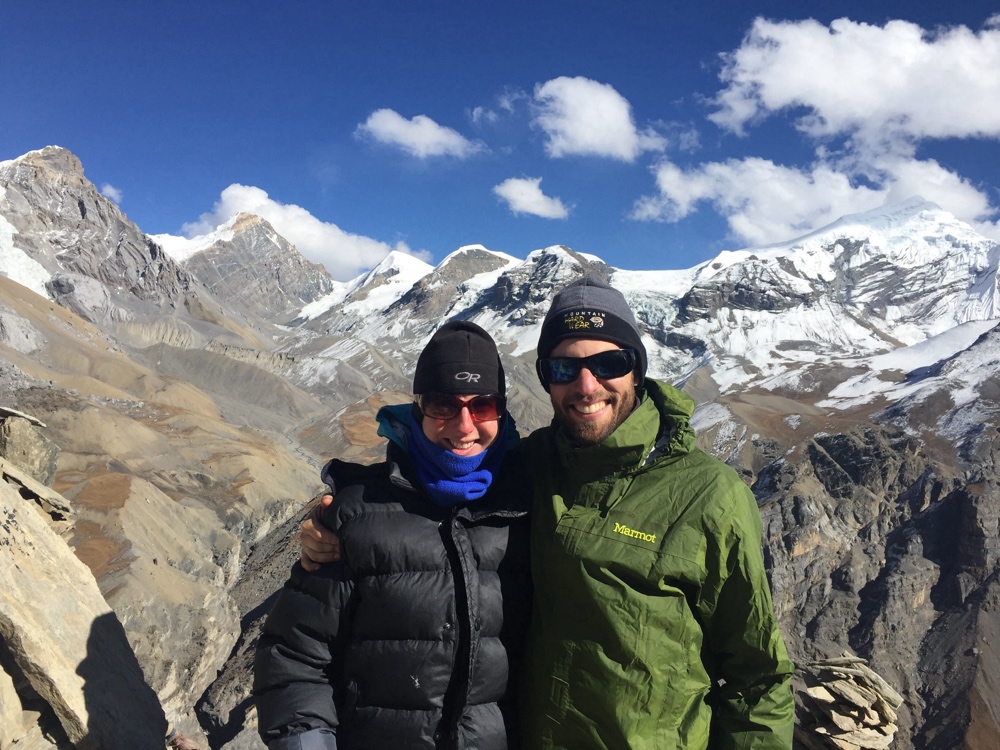
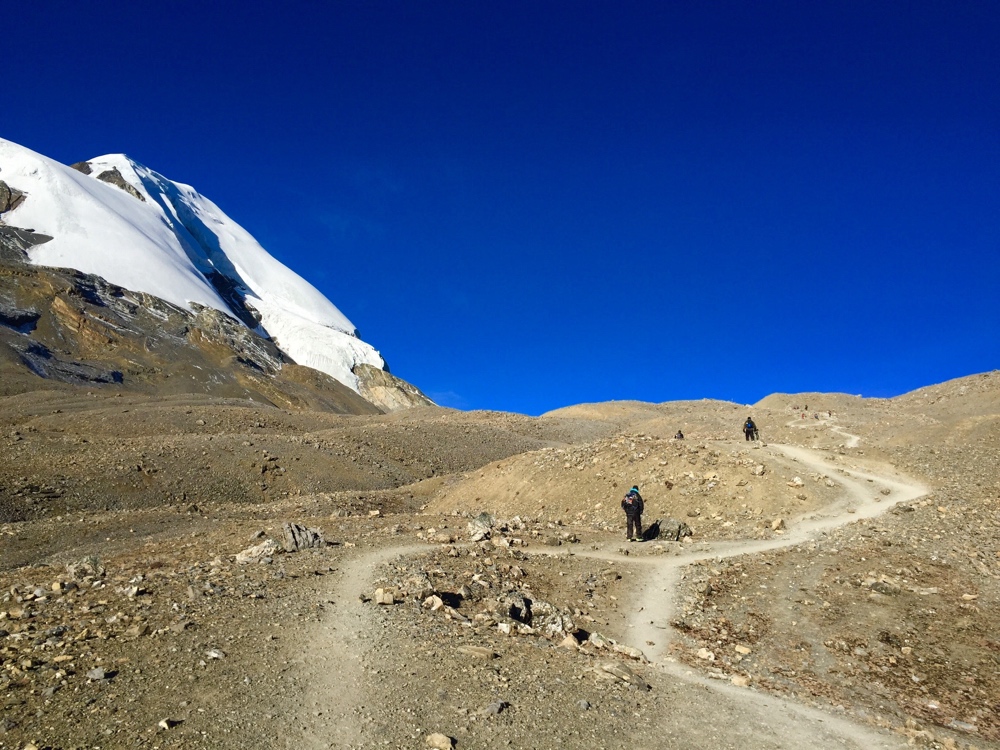
6 hours after we crossed the highest pass (Thorong La, ~17,800 ft.), winter upped the ante with its first snow storm of the season. We were tucked safely in our guesthouse by that time, though still cold as it was one of our unlucky nights without heat sources in dining commons. It snowed through the next day at higher elevations, but we escaped the snow in the early afternoon, dropping once again into the brilliant colors of fall.
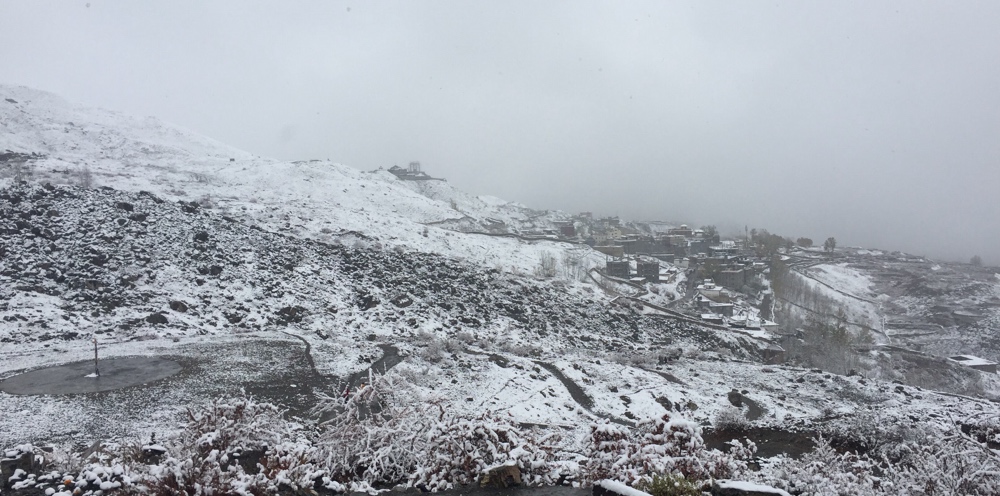
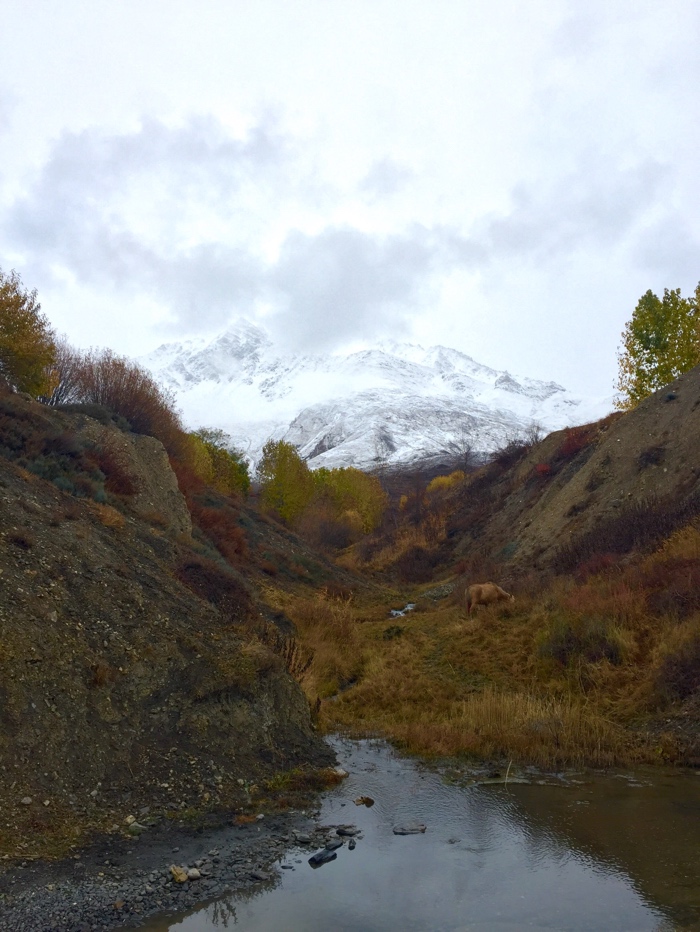
Really, I exaggerate a bit… not the winter part. That’s underplayed if anything. The fall colors part. A part of the valley we hiked through had some beautiful fall trees. But overall, even though the snow stopped, the air kept its chill, a stiff, biting wind picked up, and the scenery remained rugged. Beautiful, but rugged… for most of our descent.
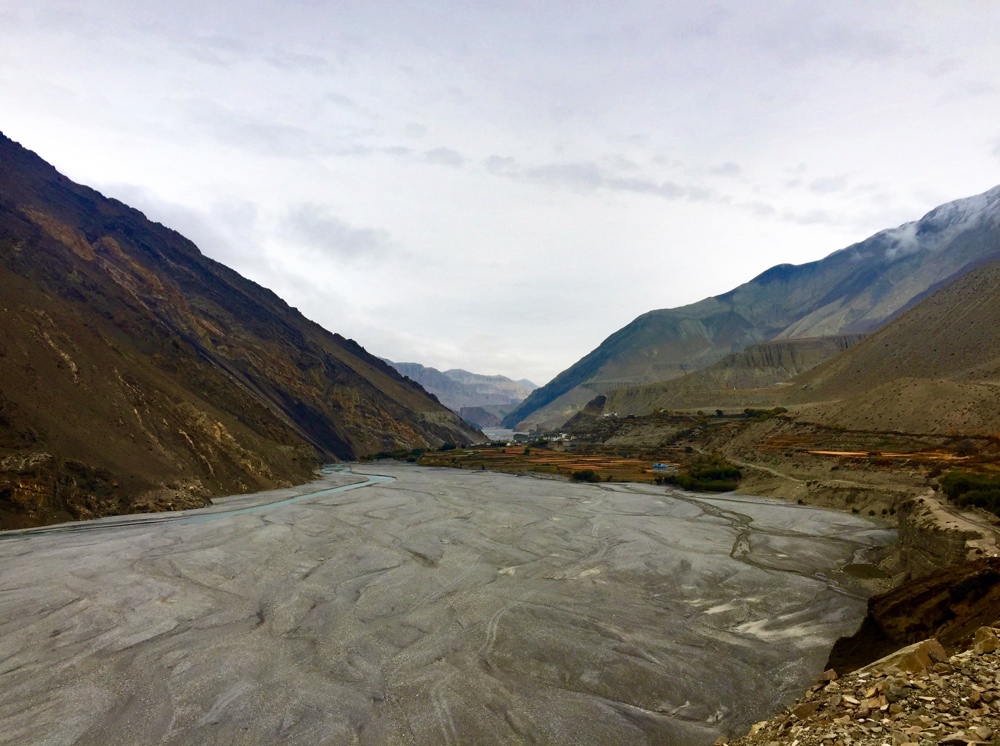
Winter was with us most of the rest of our hike… long enough to outstay its welcome… long enough that we were overjoyed when we finally descended low enough to enjoy a nap in the sunshine… and long enough that we did a happy dance just to welcome summer once again.
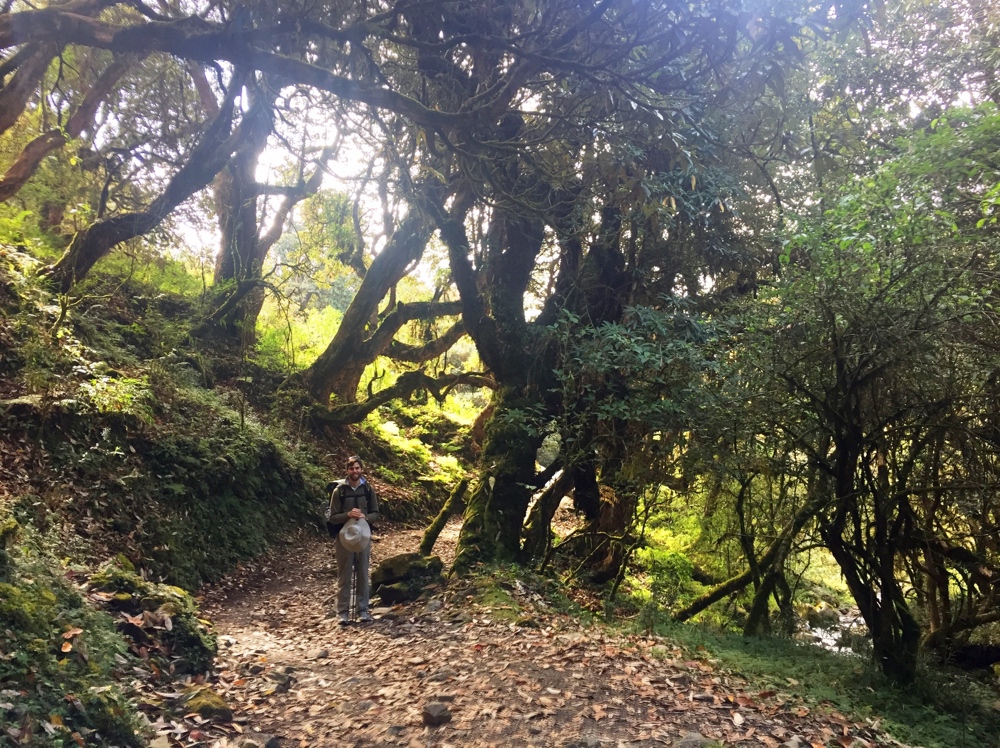
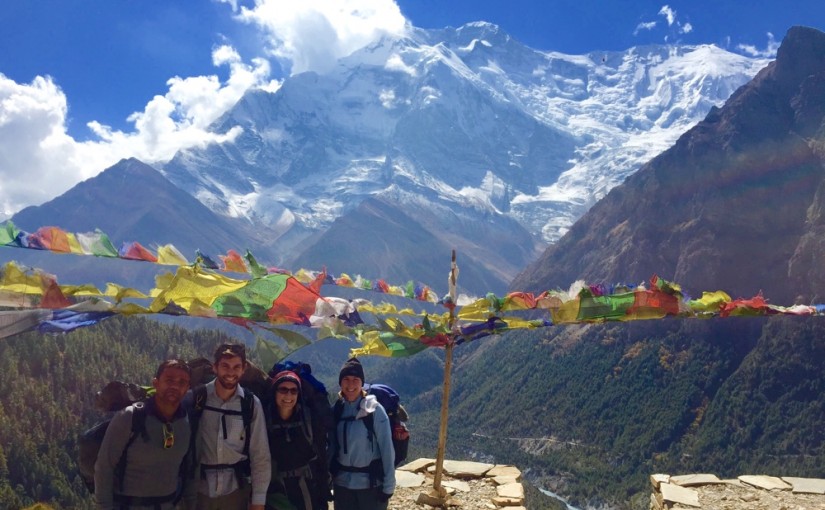
Glad you had the good jackets and warm sleeping bags with you. Did you have to pack them all the way or just bought them before the trek? Just reading your notes makes me wish I could go back and do it again and have many more adventures. Such beauty most of us here miss entirely. Love your posts, thanks for sharing and looking forward to talking in person about your adventures. Marthe
I’ve been in that region three times and each time in the spring. It’s great to see your photos of what it’s like in the fall. I’m amazed at how blue the sky is in that photo approaching Thorung La and the barren landscape, deep snow in March. In the spring Ghorepani region is covered in a forest of rhododendrons. I’m glad you got to experience the trek, it’s a wonderful place.
We just loved your write-up of the three seasons treking
through Nepal; the prose,and pictures had all of us along for
ride. The “seasons” you experienced must have left quite
a memory for you two, thanks so much for sharing (the nap
and happy dance once off the mountain; a fitting end to this
latest adventure)!! You continue to keep us all looking forward
to your next chapter. Sending good thoughts and LOL your
way — Papa and Mom